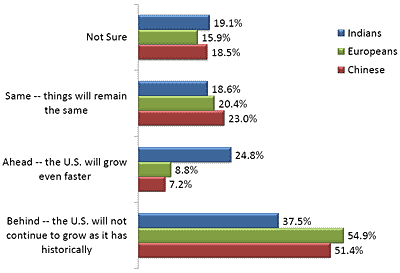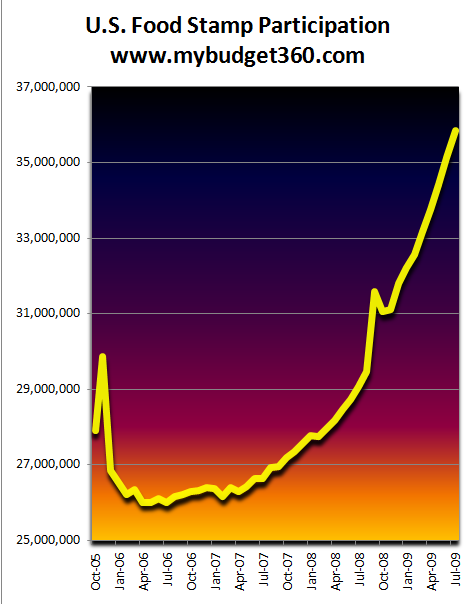Time for change's Journal - Extravagant CEO Salaries and Ballooning Income Inequality in the U.S.Grossly excessive CEO salaries in the United States have in recent years generated much wonderment and displeasure. With the coming of the severe
recession or depression of 2008/2009, that displeasure has turned to outrage in many quarters.
77% of Americans believe that that CEOs are paid too much money, whereas only 11% of Americans admire “those who run” America's "largest companies" either "a great deal" or "quite a bit”.
In 2008, the
average annual pay for a CEO of a Standard & Poor’s 500 company was $10.9 million. Those at the top, our nation’s financial elite, make hundreds of millions of dollars in a year. In 2004, the average CEO pay in the U.S. was
431 times that of the average production worker. That compares with a ratio of only 42 to 1 in 1982.
Congressional hearings into this issue in recent years reflect the public outrage, though Congressional
Republicans are not comfortable about digging too deep:
The questioning mainly fell along party lines, with Republicans apologizing for hauling such distinguished corporate officials before the panel, and Democrats questioning everything… Many Republicans on the committee fought the very premise of the hearing. “This is a hearing in search of bad guys,” said Darrell E. Issa, Republican of California. “Are there bad guys in front of me? I’m not seeing it.”
Many Congressional Democrats have expressed a very different view. I think Henry Waxman nailed it with
this statement:
There seem to be two economic realities operating in our country today. Most Americans live in a world where economic security is precarious and there are real economic consequences for failure. But our nation’s top executives seem to live by a different set of rules.
Yes, two economic realities. One reality for… some people, and another reality for other people. One reality for those who face
long prison sentences for possession of a small amount of marijuana and another reality for those who commit
treason with impunity.
An article by Gabriel Thompson titled “
Meet the Wealth Gap” summarizes the roots of these different realities:
It’s about the vast political power conferred by wealth, which can be deployed to support institutions pushing policies that, in turn, magnify the wealth divide. (These institutions) subsidize senior fellows who … see something sinister in a living-wage movement that “seeks to force urban firms to pay up to double the minimum wage.”… (They) call the movement a “sneaky way of bringing socialist economics to America’s cities”.
THE CONSEQUENCES OF SEVERE INCOME DISPARITY ...
...
DepressionInside of Gabriel Thompson’s article is a graph titled “Plutocracy Reborn – Re-creating the Gap that Gave us the Great Depression”. Here it is:

This chart plots income inequality, measured as the ratio between the average income of the top 0.01% of U.S. families, compared to the bottom 90% (that would be most of us at DU). Note that preceding the great stock market crash of 1929, which plunged us into depression, the ratio rose from about 250 at the start of the 1920s to a peak of about 900 by 1929.
...
Consider the
graph on page 11 of the U.S. Census Bureau publication, “Income Poverty and Health Insurance Coverage in the United States: 2006”. That graph shows that beginning with President Lyndon Johnson’s much maligned “
War on Poverty” in the early ‘60s, poverty in the United States declined precipitously, from about 22% to 12%, before leveling off beginning around 1970. Then, with the onset of the “
Reagan Revolution” starting in 1981, poverty began to rise again, reaching a maximum of about 15% twelve years later, just prior to the Clinton Presidency. The poverty rate then began a slow steady decline, to about 11% by the end of Clinton’s presidency, followed by another rise with the onset of the Bush II administration, to 12.3% by mid-year 2006.
It then climbed to 12.5% in 2007 and 13.2% in 2008. However, that is not the end of the story, by any means. The current recession/depression will in all likelihood (and it’s probably already started)
send another 5-10 million Americans into poverty, thus raising the poverty rate in our country another 1-4%.
These statistics are no accident. They are the result of federal legislation and policies meant either to help the poor or to help the wealthy. President Johnson’s “War on Poverty” reduced poverty substantially in our country. The only rises in poverty rate we’ve seen in our country since FDR’s New Deal (which
decreased poverty) began with the Reagan and Bush II administrations, which are the only two presidential administrations since that time to substantially lower the top marginal tax rate, along with other fiscal policies that favor the wealthy at the expense of the poor and the working and middle class.
...
Pricing the rest of us out of the marketSevere income inequality means that everything that rich people want will be priced to reflect the amount of money that they’re willing to spend on in it. Barbara Ehrenreich, in an article titled “
This Land Is Their Land” discusses what severe income inequality means to the rest of us in practical terms. First, she notes a recent vacation of hers that was going pretty well until she found out that even with a 60% discount she couldn’t find a sleeveless cotton shirt for less than $100. That experience made her recall the first rule of today’s income inequality, which is “If a place is truly beautiful, you can’t afford to be there”. For example, on the subject of Key West, Florida, for which that rule did not apply as of 1986, Ehrenreich notes:
Then, at some point in the ‘90s, the rich started pouring in…. They drove house prices into the seven-figure range. They encouraged restaurants to charge upward of $30 for an entrée. They tore down working-class tiki bars to make room for their waterfront “condotels.”… As for Key West’s characters – with the traditional little conch houses once favored by shrimpers flipped into million-dollar second homes, these human sources of local color have to be prepared to sleep with the scorpions under the highway overpass…
...
Corporate tyranny prior to the Great Depression of the 1930sOur current economic plight is the worst since the
Great Depression of the 1930s. Because of President Hoover’s ideological inflexibility, he was unable to make any progress in fighting that depression, which led to FDR’s
landslide victory in the election of 1932. FDR’s
New Deal resulted in a reversal of the steep slide in GDP and the largest rate of
job creation (5.3%) in any presidential term in recorded U.S. history to this day.
In his
1936 address to the Democratic National Convention, FDR explained the role of corporate tyranny, with the never-ending striving for greater corporate profits, as the major cause of our nation’s economic plight. He called them “Economic Royalists”.
...
Incestuous methods for determining CEO salariesThus it is that today the salaries for corporate CEOs are determined by a corporate Board of Directors, with little oversight. A principle method that these boards use to determine executive pay is to tie it to the average pay for executives in similar companies, which are referred to as “peers”. But
research has shown that for the purpose of determining executive compensation, peers at the high end of the income scale are typically identified, resulting in an over-estimation of CEO pay of several hundred thousand dollars, with a corresponding overpayment of the CEO in question. This generates a positive feedback loop, wherein executive pay is continuously raised by comparing it to salaries that have been previously raised by the same process.
Why do the boards routinely overpay the executives whose pay they are charged with determining? There are many related reasons, all centering on the fact that they and the CEOs are part of the same club and there is little oversight. One problem is that many CEOs
sit on each other’s boards. If that doesn’t represent a conflict of interest, then what does?
...
We now live in a country where lower class “criminals” are imprisoned for possession of small amounts of drugs, contributing to the
largest imprisonment rate of any country in the world, while barriers to swindling perpetrated by the rich and powerful have been removed one after another, facilitating their
legal accumulation of vast riches. And even when they cross the line and break what legal barriers remain they are often pardoned or their crimes simply ignored – sometimes with the rationalization that we must look towards the future.
We are constantly told that the economic foundation of our country is the “free market”. But the “free market” is “free” only in the sense that corporations are given the “freedom” to do whatever they want, at the expense of everyone else, and ogten with massive government assistance.
William Kleinknecht, in his book, “
The Man Who Sold the World – Ronald Reagan and the Betrayal of Main Street America”, comments on how Reagan’s deregulatory philosophy affected our country:
In the Reagan years, corporate leaders were crossing lines that a few years before would have been unthinkable. A
1984 article in the
New York Times… captured the moral revulsion aroused by the budding era of greed: “a ‘me-first, grab-what-you-can’ extravagance appears to be cropping up among the nation’s top executives. It shows itself in the disproportionate salaries and bonuses paid to so many corporate chiefs… the multi-million severance payments awarded even to CEOs who fail and drive their companies into the ground”…
After the stock market bubble burst, these towers of speculation and accounting chicanery came tumbling down. The falling stock market revealed the inherent instability of huge companies hastily put together by mergers… Enron’s mind-boggling betrayal of employees and shareholders and its unseemly manipulation of power prices in the midst of California’s electricity crisis should in itself have been enough to forever repudiate Reaganism. ...








